ARCHITECTURAL PROJECTS
PUBLIC
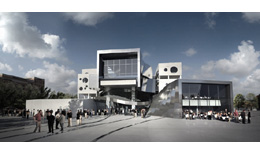
09 November, 2009
House of Music, an Hybrid space, a dynamic architecture
Music, Creativity and Art are the centres of COOP HIMMELB(L)AU’s inspiration. 
Wolf D. Prix of COOP HIMMELB(L)AU made the presentation of the final scheme design for The House of Music in a press conference that took place on 21 October 2009 at the Utzon Centre in Aalborg of Denmark. Wolf D. Prix commented: "Supreme architecture is only achieved by continuously refining the fundamental architectural principles. Therefore, the architecture of the House of Music is a living and very dynamic process."
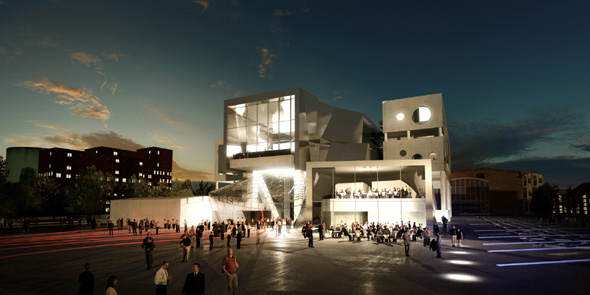
COOP HIMMELB(L)AU's design for The House of Music in Aalborg is an Hybrid space. It combines Cultural and Educational functions with shared public spaces and performance infrastructure in an open system enabling dialogue and exchange of ideas and views between the public, artists, students and educators. Music, Creativity and Art are the centres of inspiration, both of the shared-synergetic behavior and of the form and expression of the architecture.
Formal and informal encounters and exchanges are enabled through public spaces that are oriented towards the Culture Square and Fjord, and are designed to serve as interchange platforms connecting the semi-public and private functions of the multiple institutions housed within, and providing areas of exchange of information, knowledge and inspiration for the various residents and the public in the House of Music.
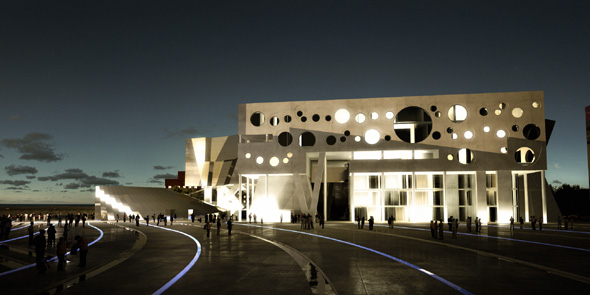
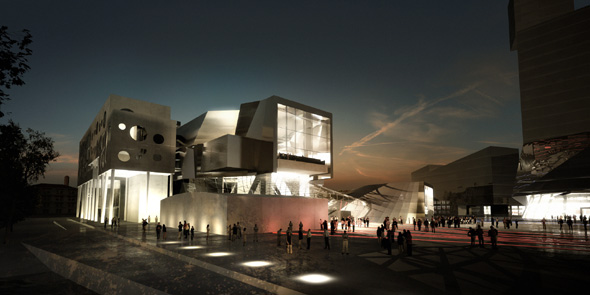
A 1,300 seat, world class, symphonic concert hall is at the core of a compact U-shaped block of music, educational and performance support spaces which wrap around the Main Hall on three sides. The Building composition opens to the north in a vertical public foyer with views over the fjord and adjacent Culture Square. Three additional halls of various sizes and functions complement the Main Hall and are organized below the Foyer in a vertical inversion of the classical front-of-house / back-of-house horizontal orientation, optimizing floor space and providing a lively vertical social space with a mix of users and visitors.
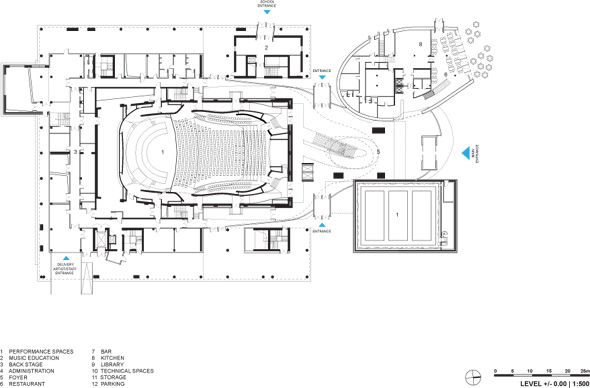
The House of Music is organized around the concept of sharing and synergy, while recognizing the need for independence of the individual institutions within. Wherever possible sharing of spaces is enabled and overlapping of use of public and performance spaces is supported through the design. The basic organization uses the Foyer to connect a centralized Concert Hall with a U-shaped bar of Educational functions placed over the backstage facilities in a courtyard scheme with the Concert Hall as its center. This typology is adopted to insure good natural light and maximized views within an economical and efficient system of circulation, and to establish close, central relations to the performance and public space of the House of Music.
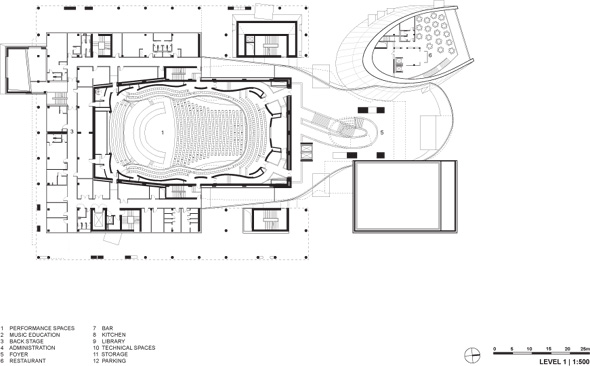
The "U" is oriented with the open side towards the Fjord where the Foyer is located facing onto the new House of Music square adjacent to the harbor front promenade. The Foyer is the main common and public space and connects the public to the Main Concert Hall and its balconies, and to the Intimate, Rhythmic and Classical Halls. The front of house space of the Foyer is a compact vertical zone oriented at the same time to the Culture Square and the Fjord. This vertical organization serves to provide the most effective multiple hall front of house system for the public audience.
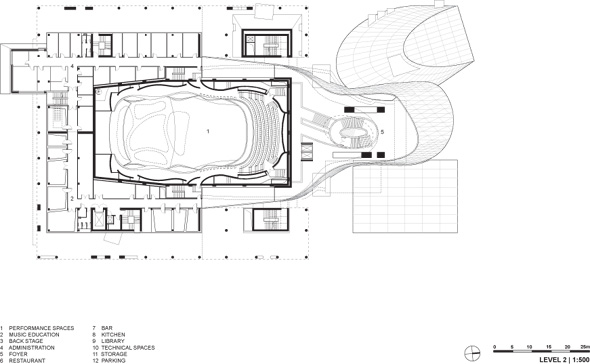
The Main symbolic entrance to the House of Music addresses the Limfjord and Promenade, and the formal expression of the Foyer reaching out towards the water. A second Main Public Entrance to the Foyer opens to the Culture Square to the West. The two entrances are formed by a combination of distinct architectural elements of the Foyer; the Restaurant Cone and a sweeping fluid roof, which are designed to encourage flow through the Foyer and mark clearly the entrances.
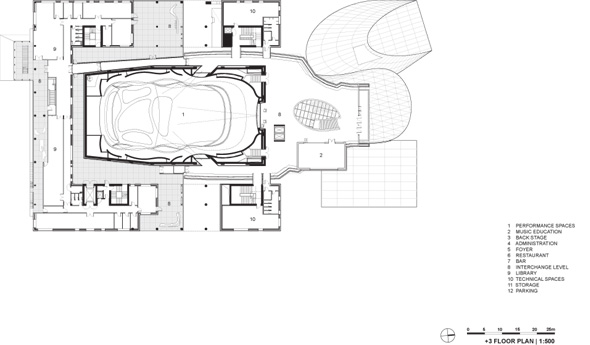
The educational facilities have a separate entrance lobby and vertical circulation opening to the Culture Square, however internally have connections to the common foyer space. The Aalborg Symphony Orchestra and visiting Artists share an entrance with the Service zone that is located at the Southeast building corner along Stursvej. This zone is a three-level U-shaped base wrapping the stage side of the Auditorium. The facilities of the Aalborg Symphony Orchestra are located in the uppermost third level of this base. The practical separation of entrances and circulations allows all of the institutions to operate independently, while at the same time the location of common functions, such as food service, lounge and other common spaces in the Foyer, ensure opportunities for meetings and encounters between the various residents of the House of Music.
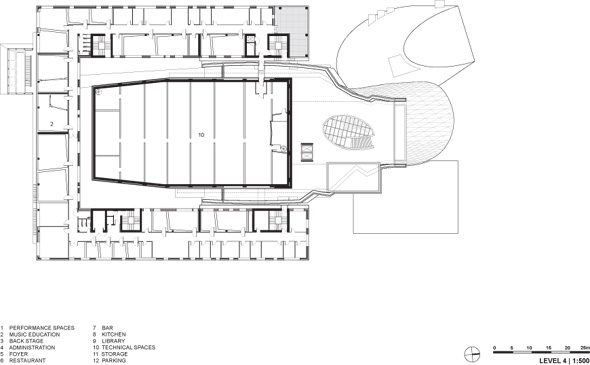
The Educational facilities of the Academy of Music and the Department of Music and Music Therapy of Aalborg University are located in a two-level U-shaped courtyard building, with the Concert Hall in the center. This "Educational U" is raised up above the back of house base creating a horizontal void which is then programmed with synergetic and shared functions, special lounges, view ports into the main Concert Hall and access-ways to the upper roof terrace. This "Interchange level" is also the extension of the main public Foyer in a circulation loop leading from the ground level around the Concert Hall with views into the auditorium through special windows, and views out to the City from terraces. At the same time the educational residents are brought down to mix on this level in lounges, the library and exhibition spaces, also offered to the public. As the heart of the building, the synergetic "Interchange Level" reinforces the main topic of sharing and interaction in the House of Music.
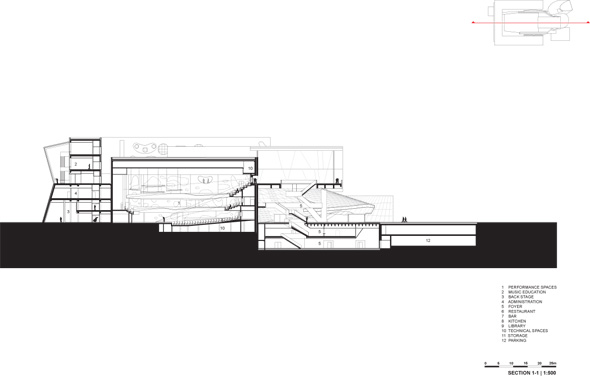
The design of the site emphasizes both the urban character of the House of Music area in the city and the natural aspects of the Limfjord and Aalborg stream. Both the Cultural Square and House of Music Square are seen as urban extensions of Aalborg and are connected to the existing pedestrian and traffic systems. An urban dynamic grid is created on the ground surfaces to emphasize the connection from west to east across the site and to the House of Music entrance. This grid is used as a guideline for paving patterns, drainage and LED lighting and together these design components provide texture, atmosphere, guidance and differentiate the scale and functionality of the urban spaces.
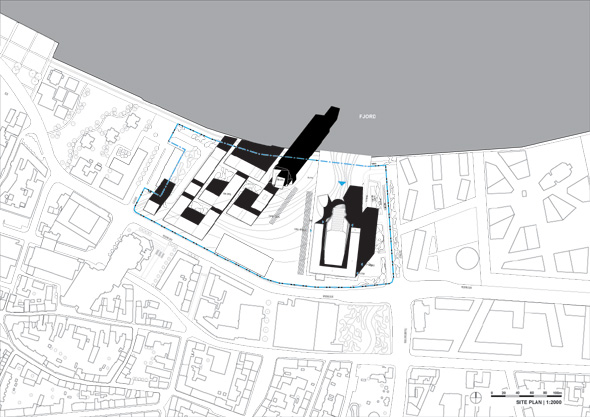
The extension and opening of the Aalborg stream forms the concept for a green park edge along Sturhsvej to the East of the House of Music. Visitors arriving by car move though this park space which includes lush extensive landscaping and trees as well as the re-opened natural Aalborg stream, and culminates in a formal drop off in front of the Foyer. Green areas and trees and small scale Urban Courtyards within the House of Music Center, are also included to provide natural elements, air cleansing and green edges connecting the House of Music Area with the surrounding landscape corridors and the fjord.
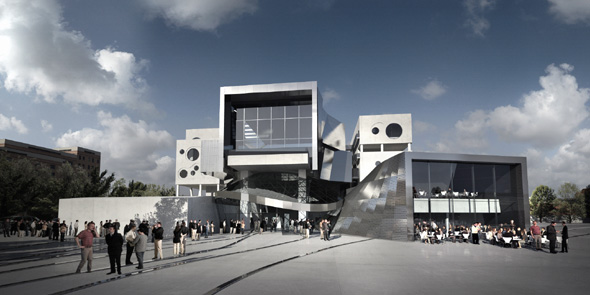
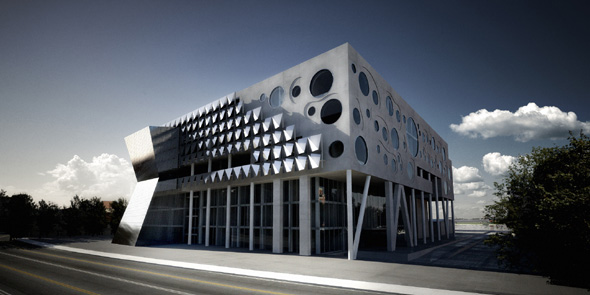
Information: COOP HIMMELB(L)AU
Images: COOP HIMMELB(L)AU
Editing: Maria Papadimitriou, architect engineer










